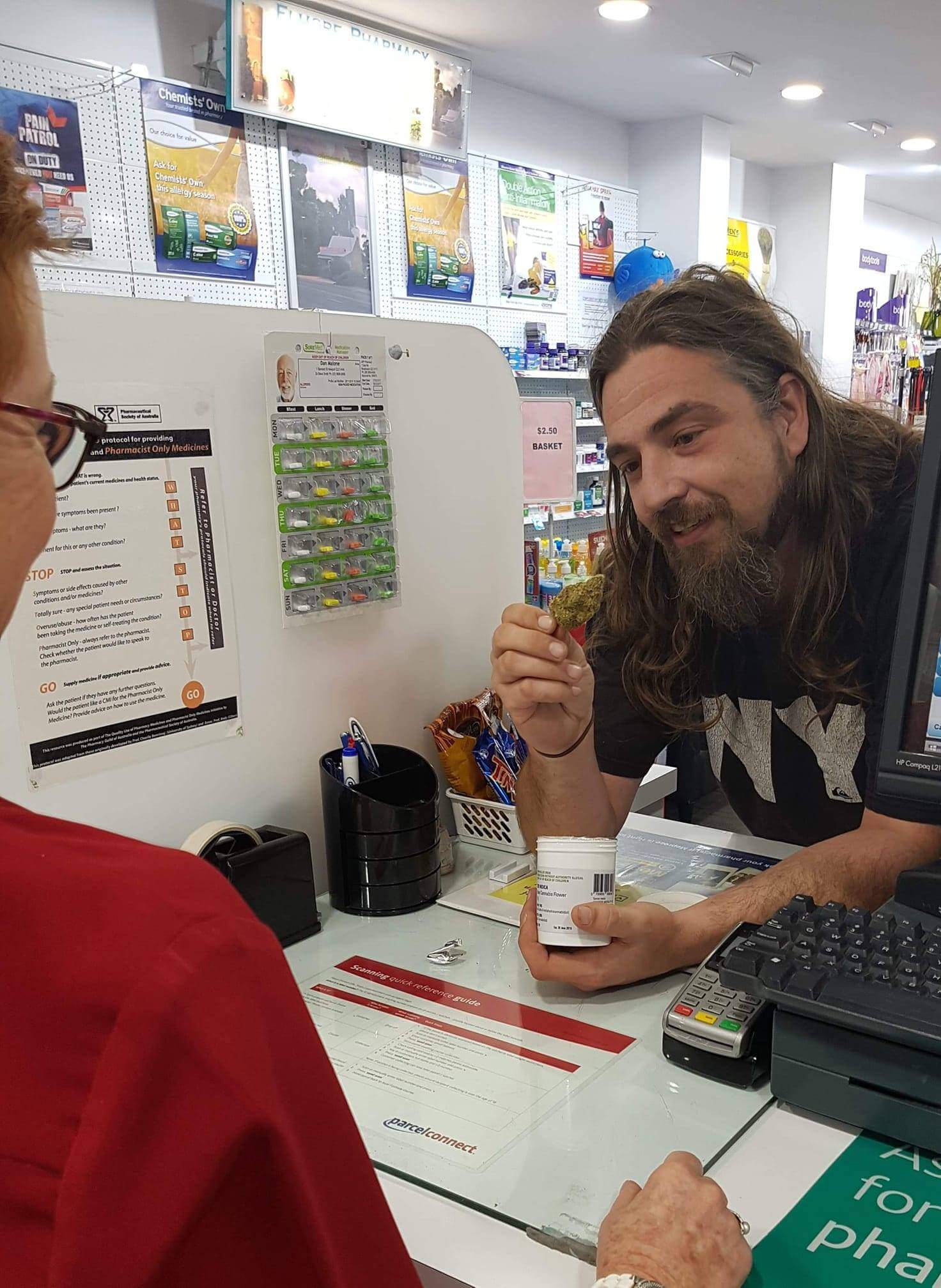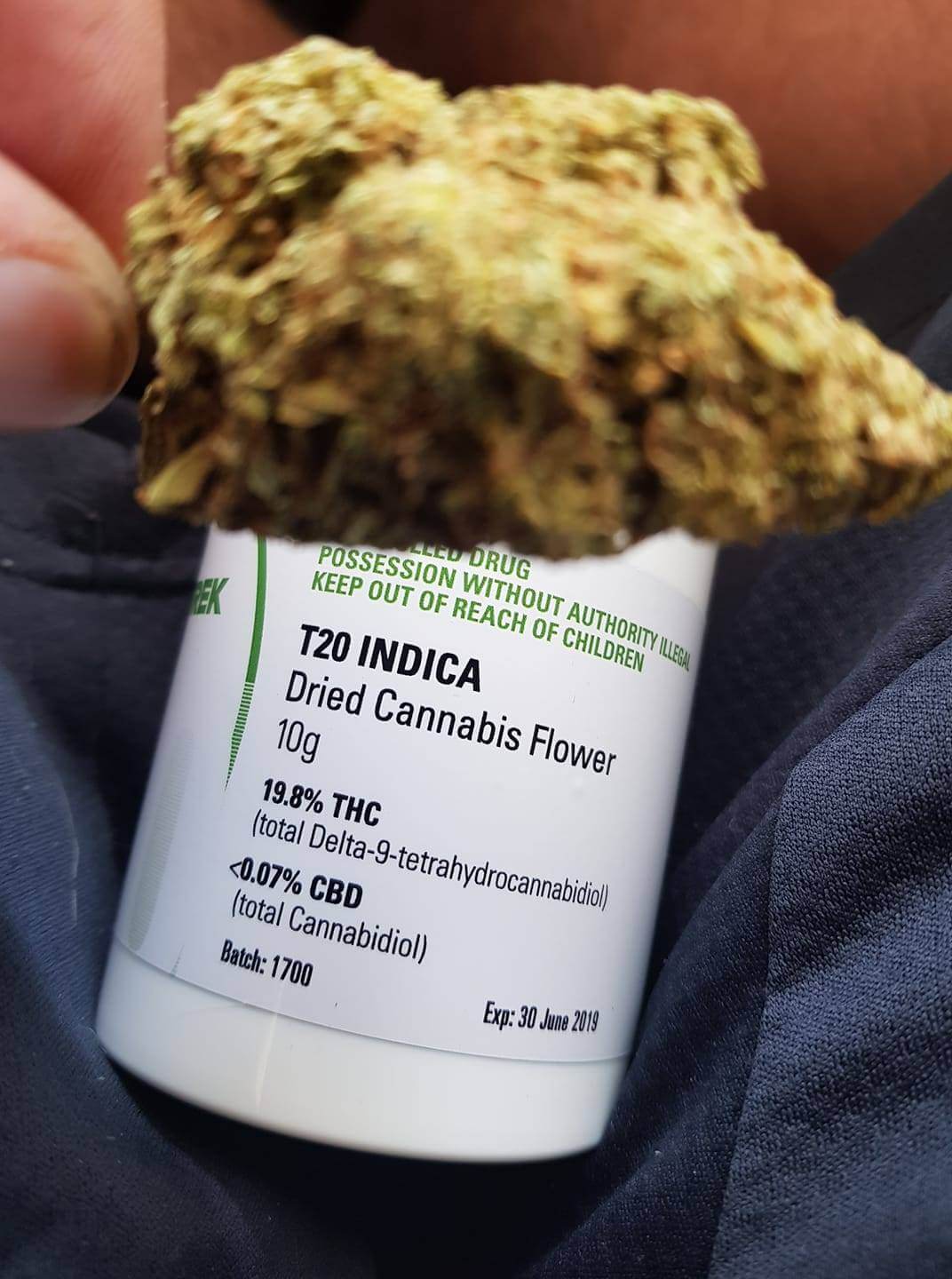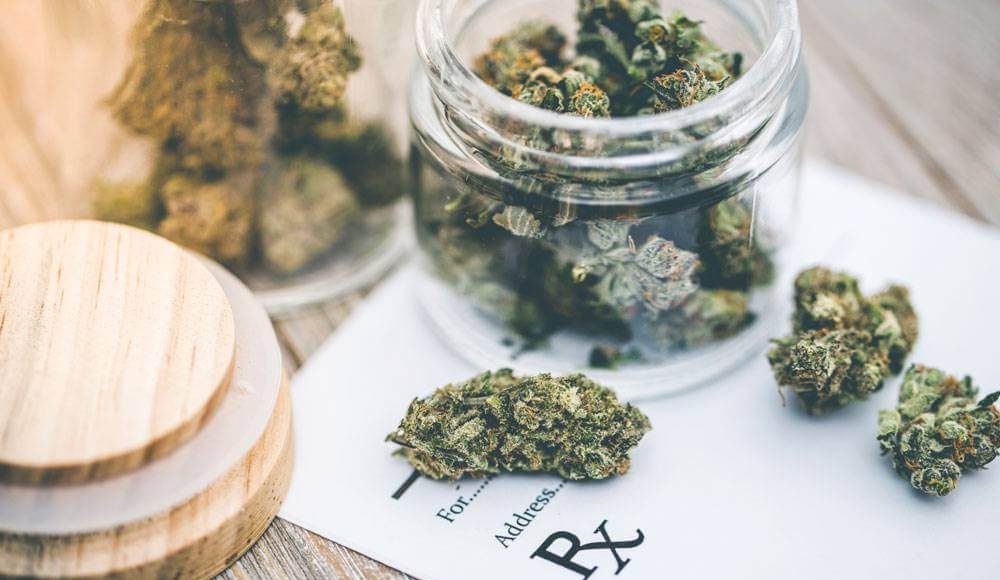Table of Contents
It wasn’t long ago that the majority of the Australian cannabis community was highly optimistic about the early trials of legal medicinal weed. Many of us thought the new regulatory practices would lead to the widespread acceptance of the plant in medical circles by the end of the decade, with federal legalisation of recreational weed believed to only be just around the corner. Today, however, most of us cynically ‘know better’ than that. Our expectations of medicinal legalisation didn’t really eventuate, with our dreams of legal cannabis once again left outside in the cold to face the harsh, weathered realities of politics.
Medicinal weed has been supposedly ‘legal’ in Australia for three years now… yet, you wouldn’t know it. There are patients out there who now rely upon the scheme for treatment, of course. Yet, despite changes to the regulations, many people have made it clear that access to medicinal cannabis still isn’t always guaranteed to those who need it. [1] So, what’s going on, here?
This article will break down the dysfunction of the current system, and provide some explanation for why the ‘pseudo-legalisation’ of medicinal cannabis has led to the disappointing outcomes many Australians have learned to passively accept.
Delay Tactics
Much like other drugs, medicinal cannabis is currently regulated by the Therapeutic Goods Administration. However, both critics and patients far and wide report that this system isn’t working sufficiently. [1] Indeed, the original architects of medicinal cannabis in Australia had a very different outcome in mind from the outset.
In 2014, Greens Senator Richard Di Natale proposed a system for the provision and regulation of medicinal cannabis beyond the jurisdiction of the TGA. This legislation had initially sought to create a ‘one stop shop’; a stand-alone, single-purpose body, responsible for research, licensing, manufacture, cultivation, supply, and the import/export of cannabis. In February 2015, Di Natale’s bill was referred to the Senate’s Legal and Constitutional Affairs Legislation Committee for review and counsel. After over six months of vigorous debate and consultation across a variety of areas and disciplines, the committee recommended the bill be passed into law.
Yet, the Australian Government had… other ideas. They felt that cannabis should be subject to the rigid system of testing, registering and oversight of any other drug, based largely on the pharmaceutical model of the TGA and its ‘Special Access Schemes’.
Access to Legal MC in Australia
In a statement, the TGA have said that “the regulatory framework for medicinal cannabis balances access to unapproved products with appropriate safeguards for the Australian public”. [1] Yet, critics of the present scheme have condemned the ODC/TGA regulations as far too restrictive. [6]
Category B of the Special Access Scheme (SAS) and the ‘Authorised Prescriber’ scheme are presently the only means which patients can legally get a hold of the drug. Under these schemes, prior approval from a medical professional is required.
When regulations came into effect in 2017, ministers tweaked the SAS such that the category designed for the terminally ill was no longer applicable to cannabis. [6] This means that the one patient group which is arguably most in need of this medicine – on the grounds of compassion – has been made to wait longer periods for a successful application.
Patient access can prove to be a lengthy and protracted process in some cases, with access to the drug hidden behind several legalistic layers of bureaucracy and forms. This may explain why stock of medicinal cannabis products is piling up in storage. [8]
On the other hand, Professor John Skerritt from the Department of Health has stated that people “basically [just] have to go through the process.” He muses about “The time spent in complaining about [the] process, when it is a one-page form with some attachments for applying for access”. He claims that “you’d get the access much faster that way.” For the sake of fairness, if you are someone who seeks to use cannabis for treatment of a medical condition, spending some time to fill in an application may actually prove to be worth it, in the long run. [8]
The Authorised Prescriber scheme is generally quicker and easier to enter into than Category B of the SAS. If you’re lucky enough to find a co-operative authorised specialist, you can generally get your medicinal cannabis within weeks of your initial appointment. Though, be warned: you may be up for around $450 worth of specialist fees before you see the light at the end of the tunnel, with each script requiring its own set of authorities.

There are other glaring issues with the scheme. Participating suppliers are currently charged $250 000 for each product, with expenses being passed onto the consumer. Legal medicinal weed currently goes for around $23 per gram, which is significantly more expensive than the black market.
Truth be told, the whole process is unnecessarily pricey. Applying to grow legal medicinal weed under the ODC regulations can be an unattractive prospect, from an economic perspective. There are only a few suppliers whose applications have actually been accepted. It’s safe to say that your local grow will struggle to find themselves on that list, for the time being.
Vested Interests

What’s with all the inefficiency and red tape? Why all the lip service? What made our regulators get in the way of public opinion, just to protect a clearly deficient status quo?
Well… dig a little deeper, and it’s wholly evident that there are many powerful interests behind the criminalisation of cannabis, which all have their own reasons from preventing common access to it as a medicine.
One explanation (which we offered in another article, linked here) is linked to how medicinal cannabis would contravene international treaty obligations under the United Nations 1961 Single Convention on Narcotic Drugs. [6] The 1961 document places the same restrictions on cannabis as it does cocaine, heroin and other opiates.
Okay… but why does that matter? After all, while there are many valid reasons to follow international law, the treaties we sign are ultimately non-binding… right?
Well… when your country is one of the primary producers of opium, and the continuation of that legal (and lucrative) industry relies upon that very same international treaty, they end up being a little more ‘binding’ than you would think. Australia cultivates well over half of the world’s poppies used to make prescription opioid medicines. Our nation (particularly Tasmania) has maintained a veritable monopoly on legal opium for years – a position the government doesn’t want to see jeopardised. If we were to legalise cannabis on a federal level, this is exactly what would happen.
Today, the inclusion of cannabis within the 1961 Single Convention on Narcotic Drugs is widely criticised as policy that fails to keep pace with contemporary science. [6] Even still, the United Nations has continually sustained their hardline stance on what they consider ‘illicit’ drugs.
Thus, in the long term, the only way for the Australian Government to kick this issue down the road (and reap the rewards) is to pretend they are acting in accordance with the broad public support for medicinal cannabis, whilst undermining the provision of the scheme at every possible turn.
The Prescription Problem

As we have already mentioned, the TGA places unnecessary walls between patients and their medicine. Currently, access pathways are only available through clinical trials, special access schemes, and authorised prescribers. [3]
In particular, Bastian Seidel, president of the Royal College of GPs, is frustrated that so few patients are being given the option to access medicinal cannabis and so few doctors are being allowed to prescribe it. [2] He said that medical marijuana was still “pretty much inaccessible” for those who need it, with the hurdles that existed when medicinal cannabis was ‘illegal’ still remaining mostly intact. [2]
He’s right. Although the ‘concept’ of medicinal marijuana is legal, any associated cannabis products are not registered on the Australian Register of Therapeutic Goods (ARTG). This means that marijuana is technically a medically-unapproved therapeutic good. [3] Additionally, the TGA has stated that 249 individual medical practitioners have approved applications under its Special Access Scheme, with 56 medical practitioners being approved as ‘authorised prescribers’. This is a relatively tiny proportion of those actually practicing medicine in Australia. [2]
“It is frustrating for us, because medicinal cannabis might be an option of last resort for patients where we’ve tried absolutely everything in the book.” [2]

As of 2019, over a hundred thousand people have applied for legal access to medical cannabis, mostly to treat chronic pain. [4] The TGA states that 4200 people across the nation had been approved for the Category B SAS scheme in the three years since it was legalised in Australia. [7] Meanwhile, it is estimated that up to 100,000 people may still be going through illegal channels to access cannabis for medicinal purposes. [2]
Practitioner Confusion
Many people report being knocked back by their doctors, after being told there’s ‘no evidence’ that medicinal cannabis would help their conditions. [4] It’s true that research supporting the benefits of medicinal marijuana on a factual basis has been suppressed by lawmakers, impeding the availability of registration. [3]
Additionally, the medical practitioners responsible for authorisation and making applications for their patients have little-to-no training in the use of medicinal cannabis. That is to say, most do not hold a specialist knowledge of the intricacies of the body’s endocannabinoid system. This has made most doctors very reluctant to open themselves up to potential litigation, for prescribing something they don’t understand. [6]
Additionally, Australian medical practitioners often claim that there is little ‘high quality’ evidence for the effectiveness of medical cannabis. This may be due to the fact that cannabis contains dozens of active compounds, where trials tend to test only one or two. The substance also tends to affect people differently, and is known to be most effective for medicinal treatment over a longer period. These subtleties are generally not captured by the current controlled trials. [4] An entire new study design is likely needed for cannabis, in order for some medical professionals to feel comfortable prescribing it. [4]
There is also confusion among doctors as to how the drug should be prescribed. They are unsure as to the recommended daily dosage, as well as how long cannabis should be prescribed for. The fact that the scheme is so vague does not help prospective patients in their pursuit for legal treatment. [3] Fundamentally, doctors and medical professionals need assistance in making the scheme accessible. They need to be provided with better education, so that they may develop an understanding of the benefits, side-effects, and pharmaceutical properties of the drug. [3]
With that being said, America’s National Academies of Sciences has made it very clear: there is substantial and conclusive evidence that medicinal cannabis is effective for treating chronic pain and nausea. [4] There are also plenty of people who swear on their lives that they benefit from the medicinal qualities of cannabis.
Dark Money

If you’re still wondering why cannabis is so inaccessible in Australia, you just have to follow the trail of money. Huge multinational corporations work hand in hand with our political representatives to suppress research, criminalise patients, and silence the popular demands for legal weed. They have done so for decades.
Why? Well, among other reasons, providing open access to legal cannabis in Australia would mean sacrificing billions of dollars in revenue from large pharmaceutical companies; an industry that we as Aussies are completely hooked on, and our politicians and institutions are beholden to.
Cannabis is kept illegal in Australia because we couldn’t possibly go against those treaties that legally allow us to produce the same opium that kills our family members, our friends and our neighbours. Meanwhile, tens of thousands of Australians live without access to clean, effective ways of managing pain – like CBD oil, which is known for its effectiveness in treating a variety of conditions. [5] Instead, people feel as if they must turn to prescription painkillers, in the face of chronic and debilitating pain. Deaths from opioid overdose have recently risen to about 800 a year in Australia.
It doesn’t have to be this way. As a community, we need to draw a line. Enough is enough; it’s time to get our shit together and demand more from the authorities in question.
Sources Cited:
[1] https://www.abc.net.au/radionational/programs/lifematters/critics-say-medical-cannibis-regulation-is-failing-patients/10853632
[2] https://www.abc.net.au/news/2018-07-23/medical-cannabis-patients-in-australia-look-to-united-states/10026308
[3] https://this.deakin.edu.au/society/why-cant-you-get-medical-marijuana-in-australia
[4] https://www.smh.com.au/national/medical-cannabis-is-legal-it-s-not-clear-it-works-20180406-p4z86f.html
[5] https://friendlyaussiebuds.com/australian-cannabis-news/australian-addiction-to-opium/
[6] https://www.fxmedicine.com.au/blog-post/legalisation-medicinal-cannabis-australia-where-are-we-now/
[7] https://www.tga.gov.au/access-medicinal-cannabis-products-1
[8] https://www.abc.net.au/news/2017-05-30/medicinal-cannabis-access-fewer-than-150-people-senate-estimates/8571176











